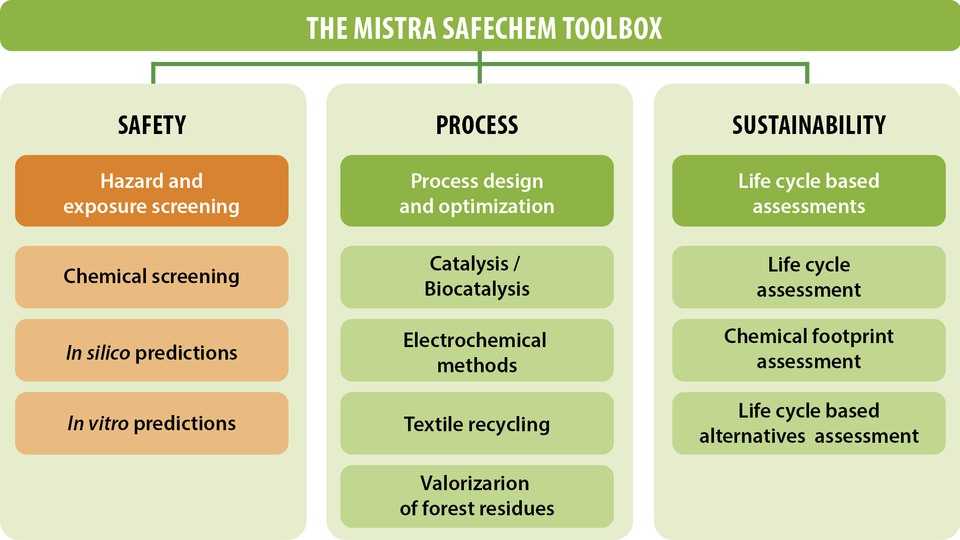
Toolbox: Hazard and exposure screening
Defined approaches are characterised by the combination of in littero, in silico and in vitro hazard prediction methods in a decision framework. The starting point is usually a situation where there is insufficient literature data to say whether a chemical is hazardous in a particular way.
If data is not available, in silico tools are applied as appropriate. The results can be used as the basis for a decision based on certainty, either to advise on hazard or to proceed a biological test to confirm or not the hazardous property. Defined approaches are not necessarily regulatory compliant, based on acceptance guidelines, but allow screening decisions to be made. The current focus is on defined approaches for mutagenicity, endocrine disruption and skin sensitization, where the decision points are clearly defined.
-
2024-06-28 | newsImpressive achievements of Mistra SafeChem in phase 1
-
2024-06-19 | newsNew report: Crystal Engineering for Water Treatment
-
2024-05-17 | newsSee the full agenda for our final webinar
-
2024-05-15 | newsThe Mistra SafeChem in silico toolbox presented at the SETAC conference
-
2024-04-03 | newsFour more years – Mistra SafeChem gets go-ahead for second phase


